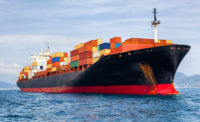According to multiple news outlets, President Trump and Chinese Vice Premier Liu He signed a "Phase One" trade deal on Jan. 15. Reaction from major dairy organizations was mostly positive.
“Today, the two most powerful economies in the world began to restore a positive, mutually beneficial trade relationship, and dairy producers and processors across the United States are grateful,” said Michael Dykes, D.V.M., president and CEO of the Washington, D.C.-based International Dairy Foods Association (IDFA). “To put the importance of this development in perspective for America’s dairy industry: Over the next decade, China represents a $23 billion market opportunity for U.S. dairy, and it is essential to our producers and companies that we have a trade relationship with China that further levels the playing field for American dairy and provides expanded market access for our growing industry.
“In addition to purchases of U.S. agriculture products including dairy, the deal includes commitments by the Chinese to reduce nontariff barriers affecting infant formula and extended shelf-life milk — an important concession achieved by the U.S. administration,” Dykes added. “We will learn more about the details of this phase one deal in the coming days.”
The signing of the agreement with China makes important advances on nontariff issues harming U.S. dairy trade, noted the U.S. Dairy Export Council (USDEC) and National Milk Producers Federation (NMPF), both based in Arlington, Va. While promises of additional Chinese purchases of U.S. agricultural products in the next two years are encouraging, the benefits for the dairy industry remain unclear, they noted. Given that China’s retaliatory tariffs remain a significant impediment to U.S. dairy sales in China, the two organizations stressed that work with China is not complete until the retaliatory tariffs against all U.S. dairy exports are fully lifted.
“Today’s announcement of a deal that makes progress on regulatory restrictions and other nontariff barriers hindering dairy trade is a positive step forward,” said Tom Vilsack, president and CEO of USDEC. “These are important deliverables that USDEC has been pressing China for over the course of the last few years. We need to continue to work with our government, China’s government and our customers to finish the job by lifting the remaining Chinese retaliatory tariffs against our exports.”
USDEC and NMPF said the Phase One deal with China makes progress on nontariff barriers important to U.S. dairy, including:
- Tackling facility and product registration steps that have stymied firms seeking to export to China for several years.
- Improving the regulatory pathway for exports of infant formula and fluid milk (including extended shelf life milk) to China.
- Creating new transparency and due process obligations regarding geographical indications and common food names.
- Promises of increased purchases of U.S. agricultural goods, including dairy.
Left to be fully resolved is how China will fulfill its commitment to purchase large quantities of U.S. agriculture products, including dairy, USDEC and NMPF noted.
“The dairy industry welcomes news of this deal and looks forward to beginning negotiations on phase two that must remove all existing tariffs and non-tariff barriers and create a level playing field for U.S. dairy products,” Dykes said. “IDFA is hopeful that this deal — alongside the recently implemented Phase One Japan deal as well as the U.S.-Mexico-Canada agreement — signals the United States has embraced a market- and rules-based system of international trade that is essential for the future of the U.S. dairy industry.”
USDEC and NMPF noted that China remains a valuable export market for U.S. dairy products, despite retaliatory tariffs. Over the 12-month period spanning December 2018–November 2019, U.S. dairy exports to China totaled $377 million in sales.
However, retaliatory tariffs on U.S. dairy products have steeply disadvantaged the U.S. industry compared to its competitors and contributed to 47% decline in U.S. exports to China over that same period, harming U.S. farmers, manufacturers and exporters.









